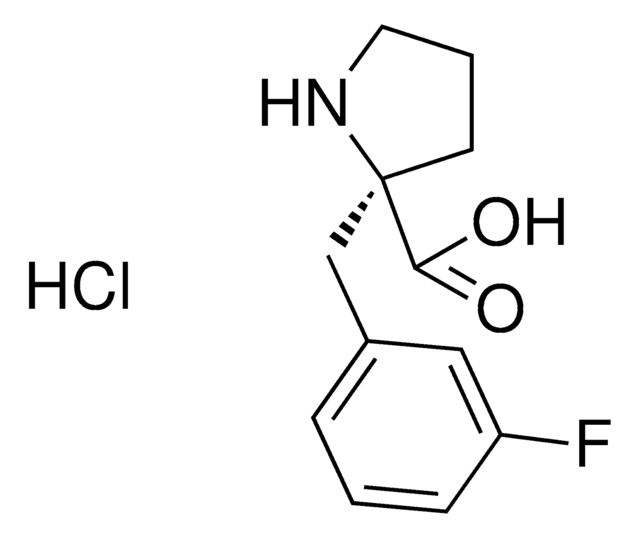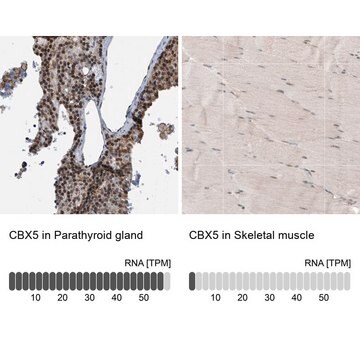MAB3446
Anti-Heterochromatin Protein-1 α Antibody, clone 2HP-2G9
ascites fluid, clone 2HP-2G9, Chemicon®
Synonym(e):
HP1a, Antigen p25, Chromobox Protein Homolog 5
About This Item
Empfohlene Produkte
Biologische Quelle
mouse
Qualitätsniveau
Antikörperform
ascites fluid
Antikörper-Produkttyp
primary antibodies
Klon
2HP-2G9, monoclonal
Speziesreaktivität
mouse, human
Hersteller/Markenname
Chemicon®
Methode(n)
ELISA: suitable
immunoprecipitation (IP): suitable
western blot: suitable
Isotyp
IgG1
NCBI-Hinterlegungsnummer
UniProt-Hinterlegungsnummer
Versandbedingung
wet ice
Posttranslationale Modifikation Target
unmodified
Angaben zum Gen
human ... CBX5(23468)
Allgemeine Beschreibung
Heterochromatin is characterized as densely coiled chromatin that generally replicates late during S phase, has a low gene density, and contains large blocks of repetitive DNA that is relatively inaccessible to DNA-modifying reagents. In late S phase, p150 directly associates with heterochromatin associated proteins 1 (HP1α, HP1β and HP1γ). As cells prepare for mitosis, CAF-1 p150 and some HP1 progressively dissociate from heterochromatin, coinciding with the phosphorylation of histone H3. The HP1 proteins reassociate with chromatin at the end of mitosis, as histone H3 is dephosphorylated.
Spezifität
Immunogen
Anwendung
Western blot: 1:500-1:5,000
Immunoprecipitation: 1:500-1:5,000
Immunohistochemistry/Immunocytochemistry: Not Recommended
Note: for immunocytochemistry and immunohistochemistry we recommend CHEMICON catalog number MAB3584.
Optimal working dilutions must be determined by the end user.
Zielbeschreibung
Physikalische Form
Hinweis zur Analyse
Positive Control: HeLa cells, 3T3 cells , F9 cells, mouse embryos
Sonstige Hinweise
Rechtliche Hinweise
Sie haben nicht das passende Produkt gefunden?
Probieren Sie unser Produkt-Auswahlhilfe. aus.
Lagerklassenschlüssel
10 - Combustible liquids
WGK
WGK 1
Flammpunkt (°F)
Not applicable
Flammpunkt (°C)
Not applicable
Analysenzertifikate (COA)
Suchen Sie nach Analysenzertifikate (COA), indem Sie die Lot-/Chargennummer des Produkts eingeben. Lot- und Chargennummern sind auf dem Produktetikett hinter den Wörtern ‘Lot’ oder ‘Batch’ (Lot oder Charge) zu finden.
Besitzen Sie dieses Produkt bereits?
In der Dokumentenbibliothek finden Sie die Dokumentation zu den Produkten, die Sie kürzlich erworben haben.
Unser Team von Wissenschaftlern verfügt über Erfahrung in allen Forschungsbereichen einschließlich Life Science, Materialwissenschaften, chemischer Synthese, Chromatographie, Analytik und vielen mehr..
Setzen Sie sich mit dem technischen Dienst in Verbindung.








